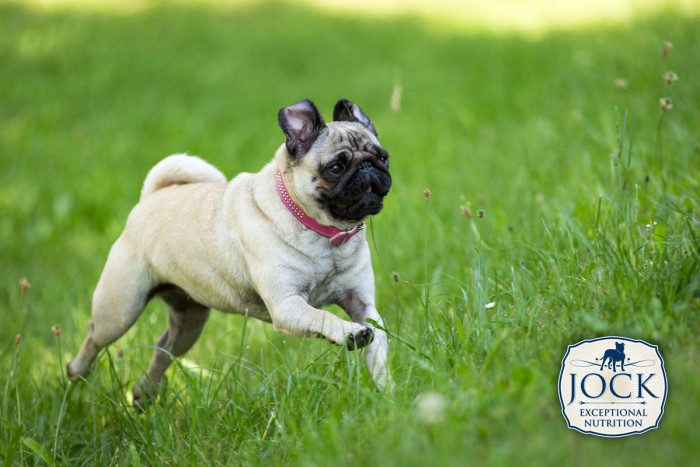Originally from China, Pugs made the journey to Europe in the sixteenth century where they became the pet du jour of royalty and nobility in the Netherlands and Western Europe. But its history stretches back even further than that.
The Pug is believed to have originated around 400BC and is widely considered one of the oldest dog breeds alive today. And when you look at its cute face, it’s clear why its popularity has not waned over the centuries.
Appearance
Pugs are small-sized dogs, with males reaching a height of between 30 – 36cm and females between 25 – 30cm when fully grown. Both sexes are quite equal in terms of weight and come in at between 6 – 9kg.
Pugs are probably most well-known for their wrinkled, flat faces with prominent, dark eyes and floppy ears. They also have quite a stocky body with straight legs and a tail that curls over the hips.
Personality
Pugs are very sociable and have a bit of a happy-go-lucky attitude. In fact, their little body belies how playful and strong willed they can be. They are also very rarely aggressive, which makes them the perfect pet to have around children and other pets.
Pugs are quite sensitive to voice tone, so they need a calm, yet firm owner. Remember, like most dogs, a Pug will become wilful if they sense their pack leader (you) is not as strong minded as they are.
These little dogs are also very intelligent and can easily pick up on their owner’s mood.
At Home
Pugs are neither excitable nor boring animals. Depending on their owner’s mood, they can be lazy and quiet or lively and fun. They are quite inactive indoors and don’t deal too well with really hot or cold weather, which makes them great for apartment living.
They need to be walked once a day and enjoy playing energetic games. But be careful not to overdo it, especially when they start wheezing.
Health
Pugs tend to catch colds easily and are also prone to allergies and chronic breathing problems due to their short muzzle. Other health issues include weeping and cherry eye, skin problems, and overeating and weight gain.
If properly cared for, a Pug can be part of your family for around 12 – 15 years.


